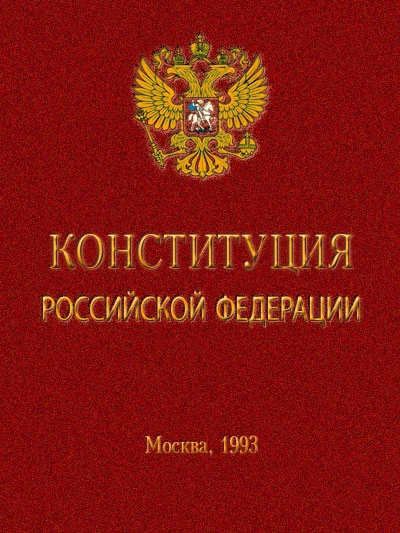In developed countries, social associations are characterized by enormous socio-economic and political significance. Their essence may involve the implementation of a wide range of activities. Public associations can express the interests of both a small group of people and huge societies. Corresponding structures can conduct activities both local and implemented on a global scale. In Russia, the activities of public associations are regulated at various levels of sources of law. Key legal provisions relevant to this area are enshrined in the Constitution of the Russian Federation. What are some other notable nuances public works associations in the Russian Federation? What types of associations can operate in Russia?

Definition of the term
What is a "public association"? The definition of this term is given in Russian law. The Federal Law "On Public Associations" says that the phrase under consideration should be understood as an association that is active in territories that make up more than half of the constituent entities of the Russian Federation and has structural units (for example, branches and representative offices). In accordance with Article 47 of this Federal Law, a public association should be considered international if at least one of its structural divisions is present abroad.
The term in question can be interpreted in other ways. So, there is a point of view according to which public association should be understood as a voluntary, self-governing, non-profit-based formation, which is created on the initiative of residents of the state, who decided to unite on the basis of common interests.
Classification of public associations
There are many reasons for the classification of public associations. This may be a characteristic of a social group that accordingly consolidates its activities. For example, if this is a professional community, then it will most likely fall into the category of mass associations. If these are lovers of creativity, then it will be an amateur team. If they are supporters of a healthy lifestyle, then they are likely to shape the social movement.
It is customary to classify children and youth public associations, religious organizations, trade unions, and cooperatives as mass categories. Another criterion for classifying organizations of this type is the scale of activity. There are local public associations working in a specific city or municipality. There are regional, federal and international organizations.

As a rule, any basis for the classification of public associations involves the division of structures into additional groups. For example, if we are talking about trade unions, then they can be classified according to industry characteristics, geography of activity.
Interest groups and lobbies
Such associations as interest groups are very interesting. The fact is that they may not have the status of a public association. Moreover, the relevant groups can function outside of any ideological guidelines, governing bodies. Their state registration is practically impossible due to the fact that such associations usually do not have founders.
Such uncertainty in status, on the one hand, does not allow such structures to rely on the rights of public associations, on the other hand, it makes it possible to conduct various unofficial activities, unless, of course, they are prohibited by law. This may be the lobby. There are quite a few of its varieties. There are parliamentary and government lobbies. The former may have channels of influence on the legislative process, the latter on the executive branch.
In some cases, representatives of official public associations may be participants in relevant communications. But their activity, as a rule, is limited by the charter and other guidelines adopted as the basis of activity. Therefore, more often than not, dialogue with the authorities in the lobby format is carried out by people who do not have obligations to official public structures. But in practice, their ability to “lobby” for the necessary decisions at various levels of government can be significantly higher than that of associations that have official status.
Interest Clubs
Close enough to interest groups involved in the lobby, clubs can be considered a form of social activity. Their main specificity is that they gather people who do not initially set tasks related to communication with government agencies and lobbying. In clubs of interest, people communicate, have fun, discuss, and discuss any significant events. Such institutions most often do not have official status - like interest groups.

At the same time, clubs can be formed by members of existing public associations. For example, a union, on the one hand, can consolidate the activities of IT professionals, on the other, it can become the basis for the organization of a Pascal language club. The first area of activity may include some socially important communications, the second one - the interaction of people united by a common passion. Clubs, of course, can also be political, but activities within them, as a rule, do not imply communications with existing authorities and parties. People are limited to communication on political topics at their leisure, exchange opinions, and discuss.
Historical varieties of public associations
Consider some of the most remarkable historical varieties of public associations.
Among these, we can distinguish:
- anti-war organizations (the first of them appeared after the Second World War in order to prevent the emergence and dissemination of militaristic ideas in society);
- national liberation structures (their activity is aimed at overcoming the legacy of colonialism);
- industrial movements (as a rule, these are trade unions of workers in various industrial spheres in developed countries);
- environmental associations;
- children's public associations;
- youth associations;
- regional organizations (their activities can be aimed at ensuring the preservation of local cultures, identities, social principles that have become traditions in a given territory).

Public associations may arise as a result of technological progress. For example, for a number of signs, these may be groups in social networks, forums, and other formats of virtual communications.
Socially significant activities of associations
As a rule, in each association certain socially significant activities are realized. These may be:
- material support for people in need;
- psychological and moral assistance to people who are in a difficult situation;
- organization of educational, adaptation programs for various categories of citizens;
- legal support, providing legal advice to those who need them;
- rehabilitation measures aimed at supporting socially vulnerable groups of citizens.
The activities of public associations may not necessarily be related to the provision of assistance and support. Often the activities of the relevant structures are associated with the organization of leisure, entertainment, research, environmental activities. The activities of public associations can also be aimed at the prevention of various negative social phenomena.
Social function of public associations
The activities of public associations in any developed country are characterized by high significance from the point of view of ensuring the stability of society and the state as a whole. Man by nature is a society-oriented subject. The needs of people in self-realization, as a rule, imply their active communication with society. The associations in question are one of the most accessible and effective mechanisms for the interaction of man and society. The activities of the relevant structures are also useful from the point of view of the economic development of the state. The activities of public organizations can be aimed at improving the legal regulation of certain areas of economic development, increasing labor efficiency through the development of new knowledge by workers.

Who can be the founder of a public association?
In the general case, the founder of a public association may be an adult citizen or another legal entity. Members and participants of associations, as a rule, must also be adults. Children's public associations may include members and participants at the age of 8 years. The fact that a citizen belongs to any association or, conversely, does not belong to any of them, cannot be the basis for restricting his rights and freedoms, or for granting him privileges and preferences by the state.
State registration: charter and other documents
Associations of the type in question operating in the Russian Federation must undergo state registration. What are the nuances of this procedure?
Registration of public associations involves, above all, the collection of a number of necessary documents. Among those:
- a statement to be signed by an authorized entity - in duplicate;
- charter - in 3 copies;
- extract from the minutes drawn up at the constituent congress;
- information about the founders - in 2 copies;
- receipt of state duty;
- documents confirming the right to use certain intellectual property products.
The main source used when registering a public association is the charter. It sets out the basic information regarding the specifics of the association, the goals of its creation, ideological issues, the structure of the institution. As a rule, public structures in their activities adhere only to those formulations that are present in the charter.
A state may refuse to register an institution if: the charter of a public association is contrary to the laws of the Russian Federation, the documents are not fully provided, the persons indicated in the application cannot be founders of the structure, the documents are false, the name of the organization being created is incorrect.
If the registering state body refuses the institution to enter information about it in the relevant registers, then this decision must be motivated in writing. An organization that has been denied registration may appeal the actions of a specific unit of the competent government agency to higher authorities or in court. The institution at any time to re-submit an application for entering information in the state registers - if the reason why the competent authority refused to register the organization is eliminated (for example, the necessary documents are collected in full).
Registration Fee
In order to register a public association, it is necessary to pay a fee prescribed by law to the budget.If it is about creation of a legal entity then the corresponding fee is 4 thousand rubles. State registration of public associations of persons with disabilities, as well as structural units of such institutions involves the payment of a fee of 1400 rubles. Changes that may be made to the constituent documents of the relevant organizations are also accepted by the registration authorities, subject to the transfer of the fee to the state - in the amount of 100 rubles. A similar action for legal entities, as well as the liquidation of such structures involves the payment of state fees in the amount of 800 rubles.
Legal right to association
Having considered what a public association is, and also having studied the basic information regarding the registration of such structures, we will examine in more detail how the essence of the respective associations is revealed in various sources of law. Let's start with the main law of the Russian state - the Constitution.

In accordance with article 30 of this source of law, every citizen of the Russian Federation has the right to unite with others. Such preference involves the creation on a voluntary basis of various public associations in order to protect interests and achieve goals. Citizens of the Russian Federation also have the right to join existing associations, as well as to leave them. Public associations and organizations can be created in Russia without coordination with the authorities.
Unions
Let us now consider some varieties of associations provided for by Russian law. Among these are trade unions. These forms of public associations are created by citizens who discover a commonality of interests regarding professional activities. Trade unions are registered with the aim of ensuring the representation of participants in certain legal relations, as well as protecting their interests and rights.
Citizens over the age of 14 can create appropriate public structures if they are employed. Trade unions are not only called upon to defend the economic interests of workers. Their role also lies in solving social and political problems, for example, in terms of ensuring employment, timely payment of state benefits, and a legislative policy in the field of labor relations.

Union methods can be very different. So, the activity of the relevant structures may consist in negotiating, holding meetings, and peaceful rallies. But in some cases, union leaders organize strikes, demonstrations, and various acts of disobedience to power. The law on public associations of the Russian Federation guarantees the independence of trade unions from decisions of authorities, the position of employers, parties and other structures. Intervention of any subjects in the activities of trade unions is not allowed.
Political parties
If we consider other common types of public associations, then it is worth, of course, to study the specifics of political parties. Such structures are created with the aim of ensuring the participation of citizens of the Russian Federation in government through the expression of political will, participation in various actions, democratic procedures.
Political parties are called upon to represent the interests of residents in government. The status of public associations of the corresponding type, as a rule, involves the formation of deputy lists in elections. A member of the party may be an adult citizen of the Russian Federation. Joining the appropriate structures is voluntary, leaving is the same. However, a citizen may be part of only one party.
Signs of political parties
Political parties as a separate kind of public associations have a number of features. First of all, it is autonomy - traceable both in the legal context and in ideology.Socio-political associations, as a rule, are formed by people for whom certain ideological beliefs are close, dissimilar to those that form the ideological basis of the work of other associations.
The activities of political parties are not related to the commercial sphere. The activities of the respective associations are based on publicity, openness, expression of opinions and positions in public. In most cases, only citizens of the country in which the association will interact with state power can create political parties. The same applies to membership in the respective organizations. But in some countries, the law on public associations allows citizens of other states to join parties.
Party Formation Mechanisms
The main mechanism in which the creation of the party is carried out is the convening of a constituent assembly. It should be attended by a minimum number of citizens who are eligible to join the relevant political association. In most European countries, this figure is several dozen people. In some cases, the establishment of a party must be carried out by a special commission. Its number may be significantly less than in the case of the constituent assembly.
In the first scenario, the election of the head of the party, as well as its secretary, is expected, a protocol is formed on the creation of the association. At the same time, as a rule, the organization’s charter is adopted, which includes the main program provisions that the party will adhere to in the course of political activity. In Russia, the relevant associations must be registered, but in many foreign countries such a procedure is not required.
Nonprofit Organizations
We will study other types of public associations. It will be useful to study the essence of non-profit organizations. Their fundamental difference from political parties is that the establishment of such structures does not imply the participation of citizens in government. The difference between NGOs and trade unions is that people who are not employed elsewhere and who do not pursue the achievement of goals related to professional activity can join the ranks of the former.
The main motivation of the founders of NPOs is to protect the interests of specific social groups. Moreover, in some cases, the activities of non-profit organizations may be related to politics. NPOs can be classified into several varieties: organizations, associations, as well as amateur institutions.
Features of the work of public associations abroad
Let us examine what is the specificity of the activities of public associations abroad. Speaking of trade unions, it can be noted that their activities in Russia and Western countries are similar. The activity of public associations of the corresponding type involves the protection of the interests of workers and employees of certain industries. At the same time, the practical influence of trade unions in Western countries on government bodies may be more pronounced than in Russia. So, quite often in other states laws or amendments to them are adopted precisely as a result of the activities of professional organizations.
In Western countries, entrepreneurial associations also play a significant social role, such as, for example, employer unions or business associations. Their influence is also traced at the level of communications with state power structures. Such associations can have a strong parliamentary lobby. The participation of public associations in the West is also of great importance in the agricultural sector. Farmers' unions are being created, which are also able to influence legislative and administrative processes.








